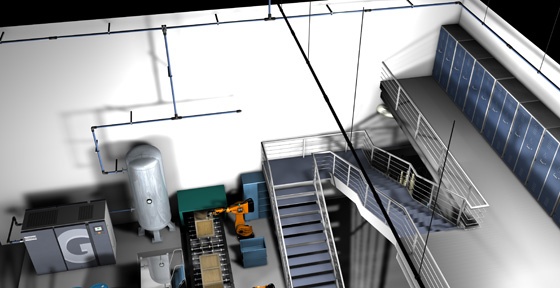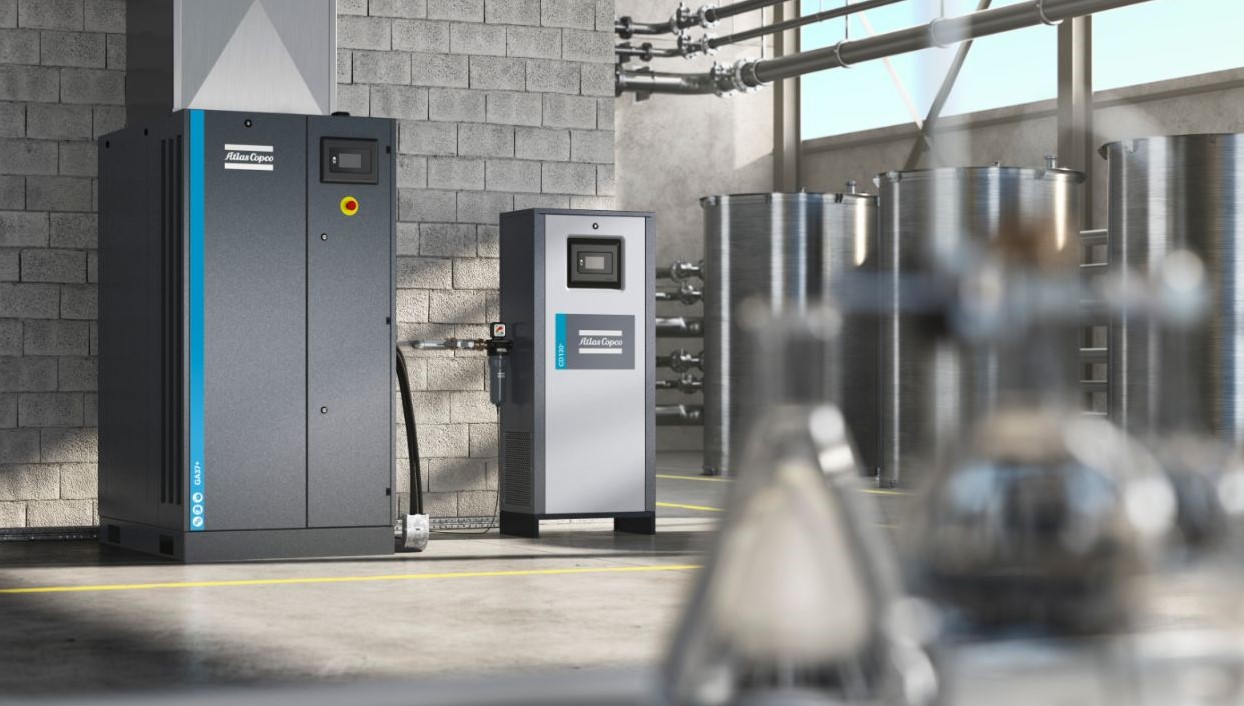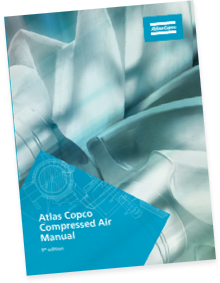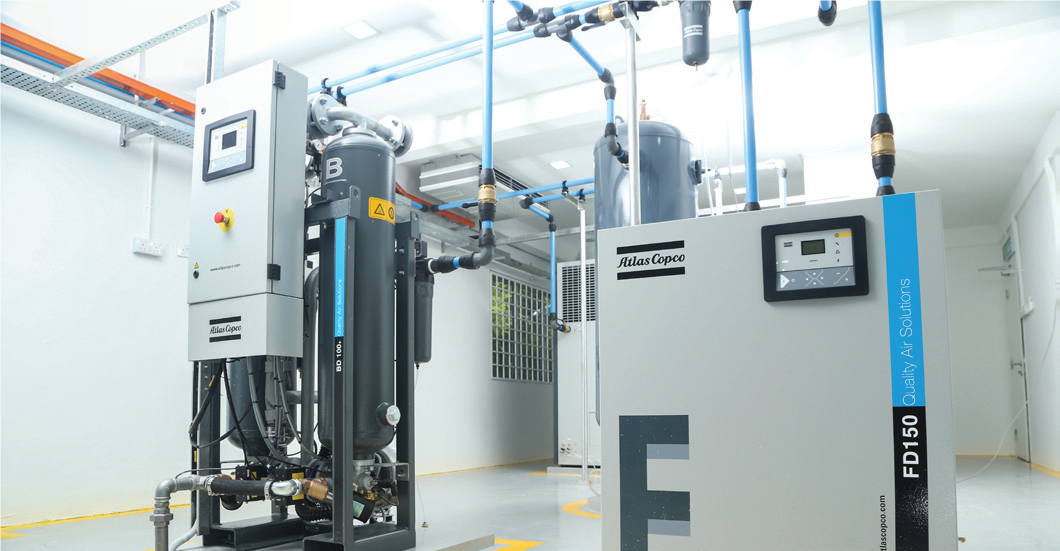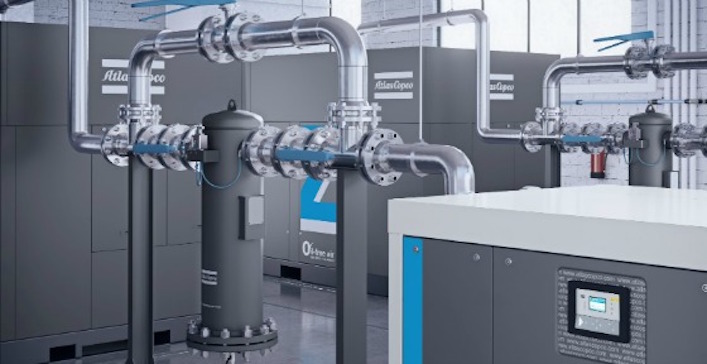Editor's Note: This post was originally published in 2015 and has been completely updated for accuracy, comprehensiveness, and new information.
For compressed air systems to perform properly, the air must be dry; this means that the air must be free of liquid moisture and at a low relative humidity prior to entering the air network. Different methods can be used to remove the moisture content from compressed air, which will help it maintain a high level of air quality. One of the most popular pieces of equipment used to dry compressed air is a refrigerant air dryer, which can be classified as either non-cycling or as variable speed drive.
What is a Refrigerant Air Dryer?
Like its name would suggest, a refrigerant dryer cools the compressed air. This allows the water present in the compressed air to condense and be separated from the air itself, and it is a crucial air system component for applications that require compressed air dried to a low dew point. In the first stage, compressed air enters the dryer and passes through an air-to-air heat exchanger, which pre-cools the incoming air. In the second stage, compressed air passes through an air to refrigerant heat exchanger to reduce the compressed air dew point, typically to 3°C / 37°F. Water vapor that was in the air condenses into liquid, which is trapped and removed. The dry air is then warmed up in the air-to-air heat exchanger to reduce the relative humidity in the air; this will prevent condensate from forming in downstream piping.
What's the Difference between a Non-Cycling and VSD Dryer?
In a non-cycling (conventional) dryer, the refrigerant compressor runs continuously. Because ambient temperatures and the flow of compressed air vary, a bypass valve is often used to regulate the temperature of refrigerant while preventing freezing operating conditions within the system. Conventional refrigerant air dryers typically employ a piston compressor operating at one fixed speed. In terms of energy efficiency, this results in the same “on or off” shortcoming present in a fixed speed air compressor.
In contrast, a VSD refrigerant air dryer uses a scroll compressor with one spiral element orbiting around a second, fixed element. It’s compact and quiet, and the inverter that drives the scroll element can vary speed to match demand, saving energy. Because most compressed air systems do not operate under static flow and temperature conditions, variable speed refrigeration is used to control the refrigerant compressor during reduce loads and lower temperature conditions. The ability to match dryer energy consumption to air demand helps provide significant savings in operating costs.
If I Have a VSD Compressor, Should I Choose a VSD Dryer? And If I Have a Fixed Speed Compressor, Do I Need a Fixed Speed Dryer?
For processes where compressed air demand is steady, a fixed speed compressor and fixed speed dryer can provide the required air cost-effectively. For processes where the demand for compressed air varies by factors such as process, workload or shift, a VSD compressor can match the production of compressed air to demand. While a fixed speed dryer can be sized to meet the maximum output of the VSD compressor, a VSD dryer’s ability to match dryer energy consumption to air demand can also provide significant savings in energy and operating costs.
Benefits of Refrigerant Dryers
- Low initial capital cost
- Relatively low operating cost
- Low maintenance costs
- Achieves dew points of 3°C / 37°F
Interested in learning more about refrigerated dryers and compressed air technology? You can download a free copy of An Overview of Compressed Air Drying whitepaper or contact an Atlas Copco expert for additional questions.

